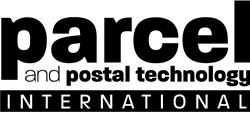UPS has partnered with software developer SAP to create an industrial 3D printing network that leverages printing machines at 60 UPS stores as well as a 3D printing factory in Louisville, Kentucky, belonging to parts manufacturer Fast Radius.
The integration into one additive manufacturing and logistics solution will make 3D printing more accessible to a wide range of businesses of all sizes, enabling them to realize the convenience and cost efficiency that the technology offers. The 3D printing network will be USA-based but will also be available to international companies who can have the products shipped by UPS.
Stan Deans, president, UPS Global Distribution and Logistics, said, “UPS is a leader in bringing industrial-strength 3D printing to reality. By building this disruptive technology into our supply chain models, we also bring new value to our manufacturing customers of all sizes. Additive manufacturing technology is still developing rapidly so ‘manufacturing as a service’ is a smart approach for many companies.”
To use the service, customers must first visit the Fast Radius website to place their 3D printing orders, which will then be directed to the optimal location based on speed, geography, and the product quality. Orders can be shipped as early as the same day.
Rick Smith, co-founder and CEO of Fast Radius, said, “Fast Radius plans to continue enhancing its production platform and to globally expand its manufacturing capabilities in 3D printing (plastics and metals), CNC machining and rapid injection molding. With this distributed, on-demand manufacturing network, UPS customers will be able to get their products to market faster and more cost-effectively because parts can be produced exactly in the quantity they need and when they need them. The potential of on-demand manufacturing is here today.”
The types of business set to benefit from the integrated network include manufacturers wanting to reduce inventory for slow-moving parts; manufacturers with short production runs where the cost to create the mold or tooling could make the orders too expensive for traditional manufacturing; manufacturers and retailers of custom/semi-custom goods; industrial designers and engineers who want high quality rapid prototypes delivered as fast as one day; and entrepreneurs, startups and manufacturers who don’t currently have access to 3D printers or have limited capital and time.

